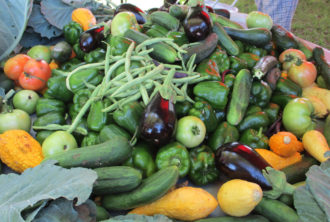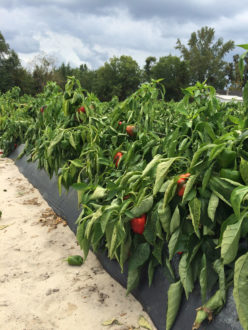RALEIGH, North Carolina – A North Carolina State University study quantifying food waste on the farm seems to suggest that the amount of edible and marketable vegetable crops being left in the field after primary harvest is much higher than previously thought.
In a Southern Sustainable Agriculture Research & Education (SSARE) Graduate Student Grant, researchers developed a standardized protocol that farmers can use to quantify on-farm vegetable losses and rein in food waste by encouraging market development of edible and nutritious produce that doesn’t meet industry grade standards.
“Crop losses at the farm level can be significant, however, there are no studies that we identified that quantify the volume of loss, and production level losses are not included in USDA food waste data, or other recent food waste studies,” said graduate student Lisa Johnson. “Not only does the loss of specialty crops reduce farm efficiency and sustainability, but the recovery of those crops can increase farm profitability and availability of fresh fruits and vegetables.”
In the study (GS15-142), “Food Waste: Quantifying on-farm vegetable losses,” Johnson and Nancy Creamer, Extension horticulture specialist and director of the Center for Environmental Farming Systems (CEFS), evaluated vegetable crop yields on 13 fields of a 300-acre vegetable and commodity farm in North Carolina. Field size averaged 6.75 acres, ranging from 2.5 acres to 14.75 acres, and included such crops as squash, zucchini, cucumber and eggplant.
“Current figures in food loss and waste are often reported in estimated percentages, and farm-level losses for fruit and vegetables are most commonly considered to be 20 percent of the marketed yield,” said Creamer. Results of the SSARE-funded study found that of the 13 fields sampled, five fields contained marketable produce greater than 20 percent of the harvested and marketed yield. And six fields contained edible but unmarketable yields in amounts greater than 40 percent.
Considering all the crops found were edible, the researchers pointed out that the losses ranged from 12 percent of harvested yield in a squash field, to 142 percent in a cucumber field and, over all crops, averaged 57 percent – translating into an estimated rate of 7,887 pounds of produce per acre left unharvested.
The researchers used a combination of field sampling and scaling to help growers determine whether to continue beyond their primary harvest. “The focus was on growers’ opportunity to further market the crop, or the potential for recovery,” said Johnson.
The produce was sorted into categories of inedible due to disease, damage or over-maturity; marketable according to growers’ specifications; and edible but unmarketable. Vegetable size and shape were assessed using USDA-recommended produce inspection equipment, and several visual aids were used to determine proper color and characteristic shape.
Determining how many plants were present in each sample row, and comparing that to the estimated plants per acre based on the plant and row spacing provided by the grower, generated a multiplier that adjusted the plants per acre to a realistic estimate of the plant coverage present under the field conditions. Once that was calculated, the remaining vegetable volume was recorded for each category of quality, and the mean volume per plant was determined. This per-plant loss in each of the three categories provided a starting point for scaling the data first to the acre, and then to the entire field.
“Sorting the produce provided a clear picture of the quality of produce remaining in the field. Scaling up from the volume found per plant using the adjusted plants per acre provided an estimate of the volume remaining per acre,” said Johnson. “Field evaluations have shown that the volume of marketable food remaining in the field can be high in comparison to the marketed volume, which could provide opportunity for growers to further profit from the crop they are already cultivating. Additionally, the volume of food that could be recovered for human consumption was much higher than the estimates discussed in previous studies, revealing the potential for recovery organizations to procure even more healthy food.”
The study, although just a snapshot of one farm, provides a method for measuring the volume of losses occurring on vegetable farms. The research is being expanded to a larger study, funded by a Southern SARE Research & Education Grant (LS17-280), “A Supply Chain Approach to Finding Win-win Sustainable Solutions for Edible, But Unharvested Produce.”
Published by the Southern Region of the Sustainable Agriculture Research and Education (SARE) program. Funded by the USDA National Institute of Food and Agriculture (NIFA), Southern SARE operates under cooperative agreements with the University of Georgia, Fort Valley State University, and the Kerr Center for Sustainable Agriculture to offer competitive grants to advance sustainable agriculture in America's Southern region. This material is based upon work that is supported by the National Institute of Food and Agriculture, U.S. Department of Agriculture, through Southern Sustainable Agriculture Research and Education, under sub-award number: GS15-142. USDA is an equal opportunity employer and service provider. Any opinions, findings, conclusions, or recommendations expressed in this publication are those of the author(s) and do not necessarily reflect the view of the U.S. Department of Agriculture.

